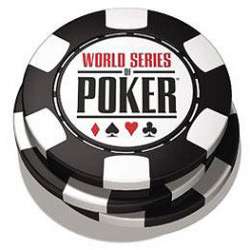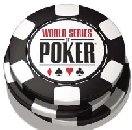 Yet another of the $1.5k donkaments took place in Event 18: $1,500 No Limit Hold’em. 3,157 entrants came to Vegas this weekend to try their hand at winning a bracelet and a big payday by playing poker for a few days, trying to get their share of the $4.3 million prize pool.
Yet another of the $1.5k donkaments took place in Event 18: $1,500 No Limit Hold’em. 3,157 entrants came to Vegas this weekend to try their hand at winning a bracelet and a big payday by playing poker for a few days, trying to get their share of the $4.3 million prize pool.
A field this massive makes it difficult for pros to navigate. However, since this event paid an incredible 324 players, many were able to cash this event. Costa Rican Godfather of Poker Humberto Brenes, Erick ‘E-Dog’ Lindgren, Dwyte Pilgrim, and Prahlad Friedman were among the many that finished in the money.
The big story in this event is that it was a FOUR day event. Originally scheduled to be played over three days, this tournament was pushed to a 4th after 6 players remained after the ten level rule was implemented on day three. While a couple of other tournaments also stretched into day 4, none did so with as many as 6 players still remaining.
When the players returned for day 4, 6 remained, with 25 year-old Foster Hays leading the way. He worked to ensure his victory, eliminating four of the other five competitors. His heads-up battle, however, was one that really tested his mettle.
Hays entered heads-up as the massive chip leader, but Casey Helton would not simply be overlooked. Helton battled back, and even held the chip lead at some points in the heads-up match. The final hand shows how close the match was: it took the tournament staff 3 counts to make sure Hays actually had Helton covered. He did, and Helton was sent home $450k richer. Meanwhile, Hays put on a new bracelet and added $735,400 to his bankroll.


 Bringing out one of the best fields we will see in this year’s WSOP, the $25,000 Heads-Up No Limit Hold’em Championship was bound to be hotly contested throughout the event. In a tournament that pitted distinguished pros against one another in match after match, including Tom ‘durrrr’ Dwan, Vanessa Rousso, Daniel Negreanu, Gus Hansen, among many other popular players, we knew this bracelet would be one to cherish.
Bringing out one of the best fields we will see in this year’s WSOP, the $25,000 Heads-Up No Limit Hold’em Championship was bound to be hotly contested throughout the event. In a tournament that pitted distinguished pros against one another in match after match, including Tom ‘durrrr’ Dwan, Vanessa Rousso, Daniel Negreanu, Gus Hansen, among many other popular players, we knew this bracelet would be one to cherish.